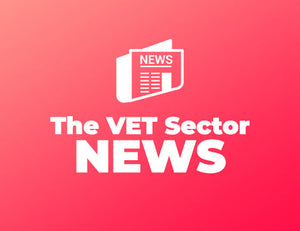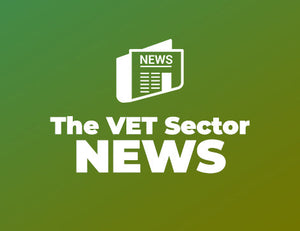
Our expert opinion on the draft standards of registered training organisations
SUKH SANDHURegulatory standards are set by governing bodies in order to ensure that products and services meet a minimum quality level. In the education and training industry, regulatory standards ensure that all organisations offering training and education are in the industry for the right reasons - providing quality education to students, ethical marketing practices, competent governance and administration, financial viability, trainers and assessors who are qualified, and training materials that are compliant and appropriate for the students, among a number of other important things.
Without regulatory standards, it would be difficult to trust that the education or training received would be of high quality. Additionally, regulatory standards should also help to protect students and industry from harm or exploitation.
On 2 November 2022, the Department of Employment and Workplace Relations (DEWR) released a draft revision to the Standards for Registered Training Organisations (RTO Standards).
|
Difference between existing and proposed standards: The existing Standards have been in place since 2015 and comprise:
The structure of the proposed Standards is around:
|
The draft of revised standards are being put in place as part of reforms that are currently occurring, including the introduction of industry clusters to replace the current industry engagement system, including the 67 Industry Reference Committees (IRCs), and 6 Skills Service Organisations (SSOs) - commencing from January, qualifications reforms to reduce overprescription in training products to empower RTOs to deliver innovative employer-focused training practices to changes within the Australian Quality Framework, new TAE22, Jobs and Skills Australia, Industry Engagement Integrity Framework, Training package assurance role and guidelines, training package organising framework, Microcredentials Framework, amended traineeships incentives to reforms within the regulatory body and its practices, especially the focus on self-assurance and excellence in training outcomes.
As a result of limitations in the current auditing and quality system, the standards are changing, including overly prescriptive standards and training products, complex standards that are difficult to navigate, standards that focus too much on administrative processes, and the challenges of attracting and retaining high-quality workers.
Under the NVETR Act, the requirements for RTOs would be consolidated in three locations;
- Standards for RTOs
- Enforceable guidelines
- Compliance-based requirements
We have had a number of experts analyse the standards and come up with a number of positives and negatives, so let's take a look at them one by one.
What were our parameters to evaluate the standards?
The requirements that we have selected have been drawn from the experiences we have had as compliance consultants, ISO auditors, and experts in RTOs during our time in the industry and also the feedback received from our clients and industry stakeholders.
|
Requirement |
Addressed |
Not addressed |
Comments |
|
Regulatory standards have an easy-to-follow structure. |
Yes |
The proposed standards are written in easy to understand format |
|
|
Regulatory standards must identify all risks and opportunities for the training organisation. |
No |
Risks to the training organisation and also to the sector have not been captured properly using the proposed standards. RTOs must go through auditing and risk management training and self-assurance practices on an ongoing basis. |
|
|
Regulatory standards must ensure that only quality educational or training institutions are operating in Australia. |
No |
No requirements to ensure that people with the right intentions enter the market |
|
|
Regulatory standards should be based on evidence-based best practices. |
No |
Regulatory standards should be based on the quality systems and practices. Individuals should not be able to interpret the requirements differently. |
|
|
Regulatory standards should be clear, concise, and accessible to all stakeholders. |
No |
Why can the guidelines and standards not be included in one document? |
|
|
Regulatory standards should be developed through a collaborative process that engages all stakeholders. |
Yes |
Yes, work is being conducted by the Department and consultants involved |
|
|
Regulatory standards should be flexible enough to accommodate variations in practice. |
No |
Reasonable adjustments are not broad enough and currently are only discussing disability |
|
|
Regulatory standards should be achievable and achievable goals should be measurable. |
No |
Goals cannot be achieved if clear language is not used to define the goal. |
|
|
Regulatory standards should foster a culture of continuous learning and improvement. |
No |
What is structured learning? As an example: Trainers and assessors must have a minimum requirement set such as 10 professional development sessions out of them 2 should be on competency-based assessments and competency-based training Even the management must also go through ongoing professional development. |
|
|
Compliance with regulatory standards should be monitored and documented. |
No |
A number of compliance requirements are difficult to monitor |
|
|
Regulatory standards should prevent problems from reoccurring. |
No |
We could not find anything in standards that assists in getting unprofessionally run training organisations from being re-registered. |
|
|
Regulatory standards should reduce bureaucratic stress on training organisations. |
No |
This burden has not been reduced |
|
|
Regulatory standards should be flexible and adaptable to changes (Industry, technology, regulatory). |
No |
Industries, technologies etc, are continuously changing, so why can we not change with this? |
|
|
Regulatory standards should promote innovation, and creativity |
No |
VET is all about innovation, so why are the standards not flexible? |
|
|
Regulatory standards should improve student-centred and industry-focused outcomes. |
Yes |
This should be the main focus of a VET sector. |
|
|
Regulatory standards should assist the regulatory body in removing unethical and unscrupulous practices and organisations. |
No |
This is one of the main reasons we need standards and guidelines. |
|
|
Regulatory standards establish, advocate and regulate self-assurance measures and frameworks set by the training organisations. |
No |
We need guidelines to set out what self-assurance measures are before we can ask training organisations to actually do it. |
|
|
Regulatory standards establish, advocate and regulate quality governance structures in place to run training organisations |
No |
What should these government structures actually look like? They need to be clear. |
|
|
Standard regulatory frameworks should be based on strong local and employer networks, industry best practices, and industry stakeholders' needs and requirements |
Yes |
There is more consultation happening to ensure the VET sector remains on the right path. |
|
|
Standard regulatory frameworks clearly mention all requirements, the scope of auditing practices and regulatory activities. |
No |
This should be clear to all training organisations, so there are no surprises. |
|
|
Standard regulatory frameworks should be able to protect the learners and industry |
No |
There should be stronger accountabilities for training organisations to protect learners. |
|
|
Standard regulatory frameworks should be able to maintain and strengthen Australia’s reputation as an education destination. |
No |
Ambiguity in standards and practices has led to Australia slipping in the educational ranks. |
Strengths
- Readability of the proposed standards - much simpler to read and easy to follow
- Pre-validation of assessment and training material - The validation of training material must occur before, during and after the implementation of an assessment.
- Financial viability risk assessment - All training organisations must go through financial viability risk assessment at the time of submission of application, change of scope and renewal of application. By doing so, the education industry is protected from organisations that are not financially viable enough to provide quality education.
- Greater emphasis on learner support through measurable outcomes should be defined in the standards
- Focusing on building workforce capability and flexibility through measurable outcomes should be defined in the standards
- Focusing on building stronger governance through measurable outcomes should be defined in the standards
- Regulatory standards are written to improve student-centred and industry-focused outcomes.
- Standard regulatory frameworks are based on strong local and employer networks, industry best practices, and industry stakeholders' needs and requirements.
Weaknesses
- Standards are no longer grouped as the ‘student journey’ - After a lot of consultation, a student-centric audit model was developed by the regulatory body starting with marketing and recruitment, enrolment, support and progression, training and assessment and course completion and it was easier for training organisations to put systems and practices in order of student progressing through the training and assessment.
- We are unsure how quality will be improved with the proposed standards
- The suggestion/preference of rewriting principles of assessment and rules of evidence is not in favour as our understanding is that they are very clear and consistent in their interpretation. Additionally, rules of evidence of validity and sufficiency are now intertwined when they are not the same thing, making the entire concept less clear and more complex.
- Can you measure the requirements in the proposed standards and clauses in a clear and competent manner? Can two different auditors reach the same conclusion? Is there room for personal judgements and interpretations in the proposed standards? The answer to all these questions is “yes”, and that’s not good for regulatory standards.
- How would you measure and ensure consistency in relation to descriptions such as “appropriate”, “effective”, “consistent with”, “completely”, “reasonableness”, “appropriateness”, “measure the well-being is supported”, “as soon as practicable”, “understanding”, “appropriate content and level” etc.
- Less focus on the lead validators, and validation team in standards
- Standards are very restrictive in nature when it comes to “disabilities”. These are only mentioned to support students when students' needs for reasonable adjustment outside of the term also require assistance and support from the training provider.
- Industry experts, mentioned in (3.1.2 (iii)) along with no requirement of ‘training and assessment credential’, why would you undermine the training and assessment credentials through your standards?
Gaps:
To protect our learners, our experts identified the following main gaps:
- The structure of the new set out is very much constrained by the thinking and interpretation of the existing standards. When these proposed standards should have focussed on quality training beyond 2022.
- The requirements related to who runs a training organisation, their qualification, experience, entry criteria, ongoing professional development for management, everything should be mentioned in a clear manner
- Training and assessment strategies should be added back into the proposed standards
- The standards are leaving wider gaps for training organisations that are not compliant and quality-focused.
- Validation of assessments should include instructions related to sample size as the random sample still needs to be statistically significant to be representative of results across the board
- Draft clauses related to pre-validation should be strengthened a bit more to include statements that pre-validation must be carried out by the training organisation prior to assessing the suitability and appropriateness of assessment and learner resources to meet the needs and requirements of each learner cohort and delivery mode.
- Standards should provide clarity related to credit transfers and RPLs; they should be explained differently
- Every clause should be accompanied by guidance and very clear benchmarks. One of the biggest problems with the existing standards is different interpretations of requirements by auditors, industry representatives (including RTOs) and regulatory bodies and this is not appropriate. The proposed standards are also very much open to these interpretations, and this is not good for measuring the quality outcomes or establishing a quality system for training organisations.
Notes:
In our opinion, if you can't measure it, you can't monitor it, so the proposed standards should provide greater clarity about how every requirement and clause will be measured.
Please send your observations, feedback, and comments to info@caqa.com.au.RECENT POSTS





